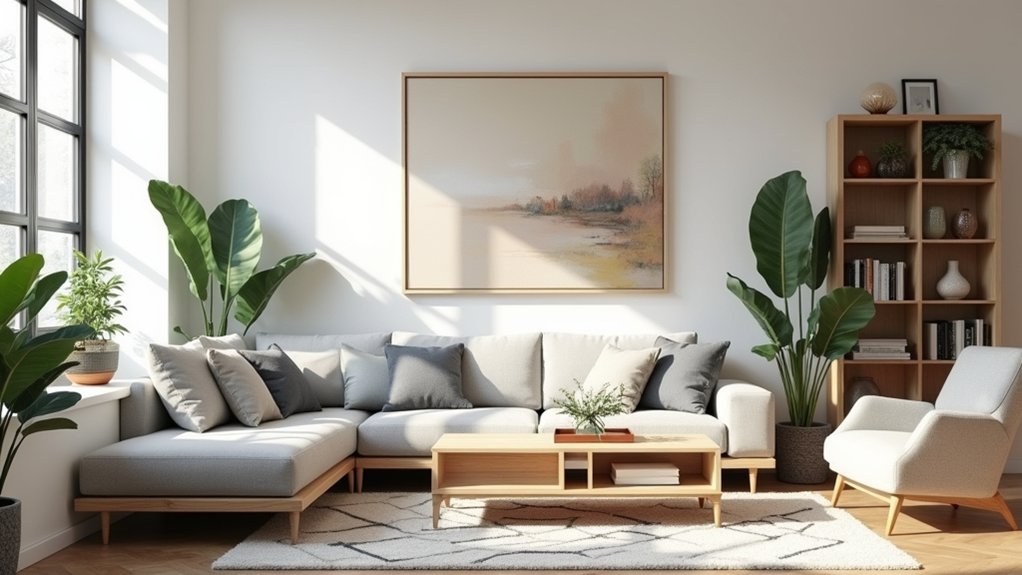
15 White Walls Living Room Ideas That Are Fresh and Versatile
White walls in living rooms offer a crisp, luminous backdrop that maximizes natural light and creates visual spaciousness. Enhance warmth with tactile layers—think mixed woods, textured textiles, and vintage accents. Display art in gallery arrangements or embrace minimalism for an uncluttered look. Pair with monochrome schemes or bold contrasts for drama. Mirrors, reflective surfaces, and thoughtfully curated decor inject personality and dimension. Discover curated design ideas that transform plain white into effortless sophistication and limitless versatility beyond the basics.
Key Takeaways
- Use white walls as a neutral canvas to showcase rotating artwork, bold accents, or statement furniture for effortless style changes.
- Layer natural wood tones, cozy textiles, and vintage pieces to add warmth and depth while keeping the space bright and inviting.
- Pair white walls with large mirrors and reflective surfaces to amplify natural light and visually expand compact living rooms.
- Maintain a minimalist look with monochromatic white furnishings and cabinetry, allowing for easy seasonal updates with colorful accessories.
- Mix industrial and classic decor against white walls to create a fresh, eclectic living room that highlights both modern and historical elements.
White on White
A white-on-white living room scheme establishes a crisp, clean canvas that amplifies natural light and enhances spatial perception. Employing a white colour scheme across walls and key furnishings—such as the Banbury 3-Seater sofa—introduces an immediate sense of elegance and comfort, making it a cornerstone of refined white living room ideas.
The monochromatic palette maximizes openness, particularly valuable in compact spaces, while offering a versatile backdrop adaptable to both minimalist and eclectic aesthetics. For visual depth, layering different textures—think matte paints, plush upholstery, and glossy ceramics—prevents sterility. Incorporating multi-functional pieces like storage ottomans and convertible sofas ensures the space remains both stylish and practical.
Accentuate the scheme with coordinated textiles or subtle accessories for personalized vibrancy without disrupting cohesion. This strategic approach guarantees the white living room remains both inviting and endlessly adaptable, ideal for contemporary interior solutions.
Let Your Wall Hangings Take Centre Stage
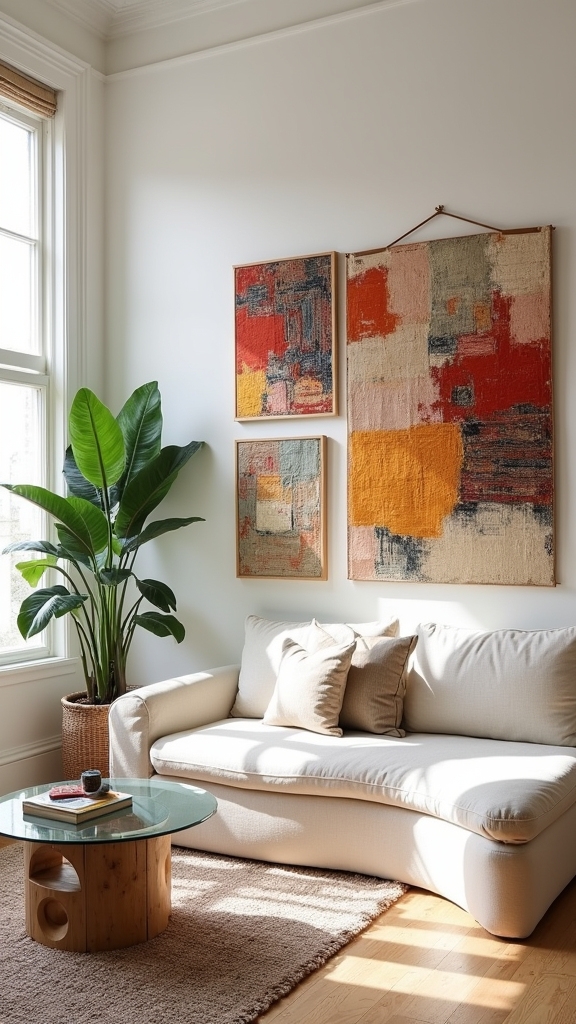
Countless living rooms benefit from the strategic use of white walls, which serve as an immaculate backdrop to enhance artwork and sculptural installations. The neutral tone of white walls amplifies the visual impact of wall hangings, ensuring that each piece commands attention without distraction. For a curated ambiance, experts recommend arranging wall hangings at eye level and utilizing gallery-style groupings to maximize cohesion. The adaptability of white walls accommodates a spectrum of artistic expressions, from bold abstracts to refined portraits, supporting effortless rotation as tastes evolve. Sculptural wall art particularly thrives against the clean expanse of white, creating sophisticated focal points. Homeowners can easily update their living space by switching wall hangings, harnessing the enduring versatility and fresh appeal of white walls. Additionally, incorporating playful gallery walls in living spaces not only revamps the area but also invites continuous expression and storytelling.
Complement White Walls With Wood Tones
Warmth emerges when white walls are paired with natural wood tones, producing a balanced and inviting living room environment.
Integrating wooden accents—such as a natural oak coffee table or walnut shelving—infuses earthy contrast and softens the starkness of white walls. This interplay of materials enables a seamless blend of modern minimalism and rustic charm, enhancing both comfort and visual appeal.
Wooden accents like oak tables or walnut shelves add warmth, balancing white walls with inviting, earthy character and modern-rustic style.
Strategically mixing wood finishes and textures amplifies depth, expanding the room’s perceived space and ensuring an airy yet anchored ambiance. For ideal effect, white furniture is often juxtaposed with wood elements to maintain cohesion without overwhelming the senses.
- Combine white furniture with wooden accents for an enhanced, timeless look.
- Layer different wood grains to introduce tactile interest.
- Use wooden paneling to ground crisp white walls and add architectural detail.
To further enhance the aesthetic, consider the use of textured materials that add depth and warmth to the design.
Add Neutral Colours to Create a Layered Effect

When layered thoughtfully, neutral colours such as soft browns, muted greys, sage greens, and powder blues establish a tranquil yet visually dynamic backdrop for white-walled living rooms. This approach leverages chromatic harmony and depth, transforming what could be a sterile environment into a sophisticated, inviting retreat. Designers recommend utilizing an array of tactile materials—think nubby linens, woven wool throws, or matte ceramics—to introduce visual interest and warmth. Arranging these neutral tones in varying intensities prevents the space from appearing flat, while subtle black accents can punctuate the palette for added refinement. Consider the optimal number of textures when designing your space to ensure a balanced and artistically rich atmosphere.
Don’t Be Afraid to Create Contrast
While a palette of layered neutrals fosters harmony, introducing bold contrasts against white walls can dramatically enhance a living room’s aesthetic. Contrasting elements—whether in color, pattern, or texture—inject visual depth and invigorate the space.
Designers recommend utilizing the crisp backdrop of white walls to amplify statement pieces and curated accents, resulting in a dynamic yet cohesive environment.
- Bold patterned upholstery or artwork instantly draws the eye, creating focal points that animate the room.
- Statement rugs in vibrant hues or intricate motifs serve as both grounding and accentuating features within a neutral framework.
- Incorporating dark furnishings or colorful accessories personalizes the space, encouraging a bespoke approach to design.
Strategically applied contrast not only enlivens white walls but also allows for flexible, evolving decor schemes. Integrating layered lighting techniques can further enhance the mood and ambiance, providing depth and versatility to the living room design.
Embrace The Past
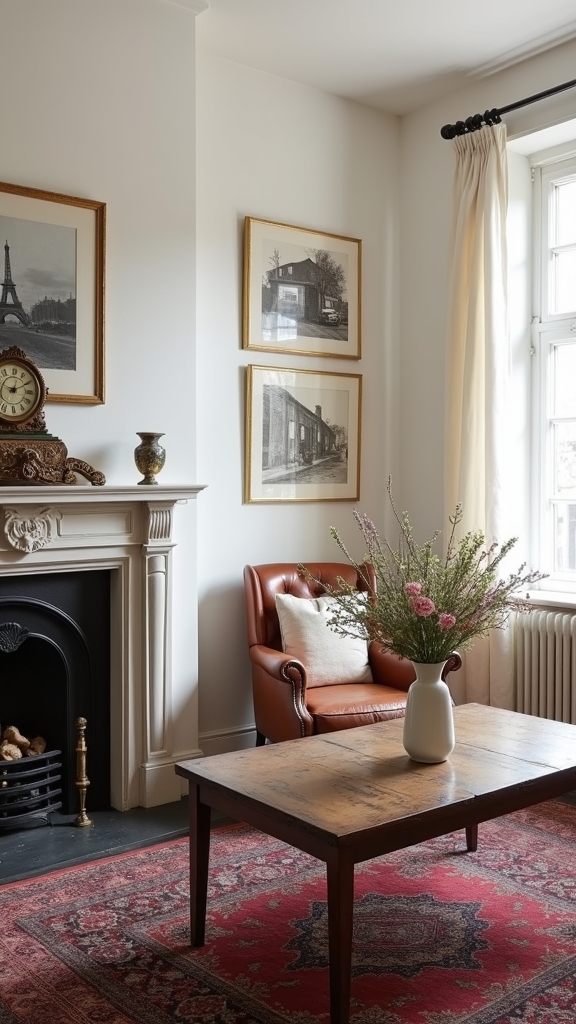
Incorporating vintage elements within a white-walled living room highlights the interplay between period furnishings and a contemporary setting. The neutral backdrop accentuates intricate details of classic pieces, allowing their craftsmanship to become focal points. For ideal cohesion, select retro or antique furniture with clean lines to balance nostalgia with modern minimalism. Incorporate diverse textures and materials like leather and velvet to add depth and tactile richness, enhancing the vintage charm while maintaining a modern aesthetic.
Blending Vintage and Modern
A carefully curated blend of vintage and modern elements transforms a white-walled living room into a visually compelling and timeless space. The crisp neutrality of white walls serves as an ideal backdrop, amplifying the character of both eras without overwhelming the senses.
Integrating vintage pieces—such as a sculptural Bergere chair or ornate mirror—against white walls allows their intricate forms and patina to become focal points, while sleek modern furnishings maintain balance and functionality. This juxtaposition fosters visual intrigue and personal expression, avoiding monotony.
Thoughtful placement and cohesive color palettes guarantee a harmonious shift between styles.
- Incorporate vintage accessories like gilded mirrors or mid-century lamps for instant character.
- Pair retro seating with contemporary tables for a dynamic composition.
- Use white walls to unify disparate vintage and modern elements seamlessly.
Reviving Classic Furnishings
Steeped in history and refined craftsmanship, classic furnishings gain renewed prominence when set against pristine white walls. This neutral canvas accentuates the ornate carvings, rich woods, and period detailing inherent to classic furnishings, transforming them into focal points within the living room.
The interplay between white walls and vintage pieces enhances spatial perception, imparting an inviting openness while allowing each item’s silhouette and patina to stand out. To create a cohesive yet dynamic look, designers often juxtapose retro or mid-century modern furniture with white walls, balancing nostalgia and contemporary clarity.
Opt for minimal wall adornments to avoid visual clutter; let classic furnishings breathe. The adaptability of white walls guarantees seamless integration of diverse classic styles, elevating both their aesthetic value and historical narrative.
Pay Attention to Natural Lighting
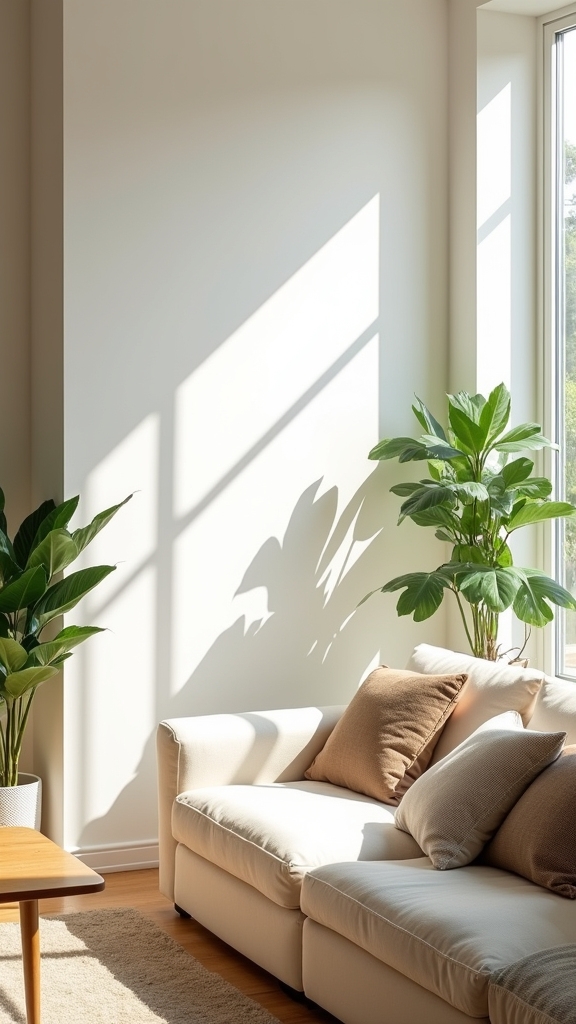
Optimizing natural daylight is essential when designing a living room with white walls, as this palette intensifies brightness and spatial clarity.
To prevent an overly clinical effect, designers recommend layering in warmer accents and textured furnishings, especially in sun-drenched spaces.
Integrating reflective surfaces such as mirrors can further amplify illumination, enhancing both the perceived size and welcoming character of the room.
Maximizing Daylight Impact
When harnessed intentionally, white walls act as powerful amplifiers of natural daylight, instantly brightening living rooms and enhancing spatial perception.
The daylight impact of white walls stems from their high light reflectance value (LRV), which efficiently redistributes sunlight throughout the space. This effect is especially beneficial in rooms with limited windows or challenging orientations, where maximizing every ray of daylight is essential.
The strategic pairing of white walls with expansive glazing further extends the reach of natural light, reducing dependence on artificial illumination and creating a visually cohesive interior.
To optimize daylight impact:
- Select high-LRV white paints to reflect and diffuse sunlight evenly.
- Position mirrors or glass decor to magnify daylight distribution.
- Minimize heavy window treatments to prevent blocking incoming light.
Balancing Light With Warmth
While white walls efficiently distribute daylight and enhance spatial clarity, their full potential is realized when balanced with warmth, especially in relation to the natural lighting a room receives. Selecting the right white paint colors is essential; cooler whites can appear clinical under abundant sunlight, while warmer undertones promote a cosy white living room, softening daylight and evening shadows alike. Large windows paired with reflective surfaces, such as strategically placed mirrors, amplify brightness without sacrificing intimacy. To control luminosity and preserve inviting warmth, incorporate layered window treatments—sheers diffuse harsh light, while heavier drapes add textural depth. This interplay of light, material, and hue guarantees the living space remains both vibrant and welcoming.
| Lighting Factor | Practical Solution | Visual Effect |
|---|---|---|
| Natural daylight | Warm white paint colors | Soft, inviting ambiance |
| Large windows | Reflective surfaces | Amplified brightness |
| Harsh sunlight | Layered window treatments | Balanced, cosy atmosphere |
Use White to Create Space
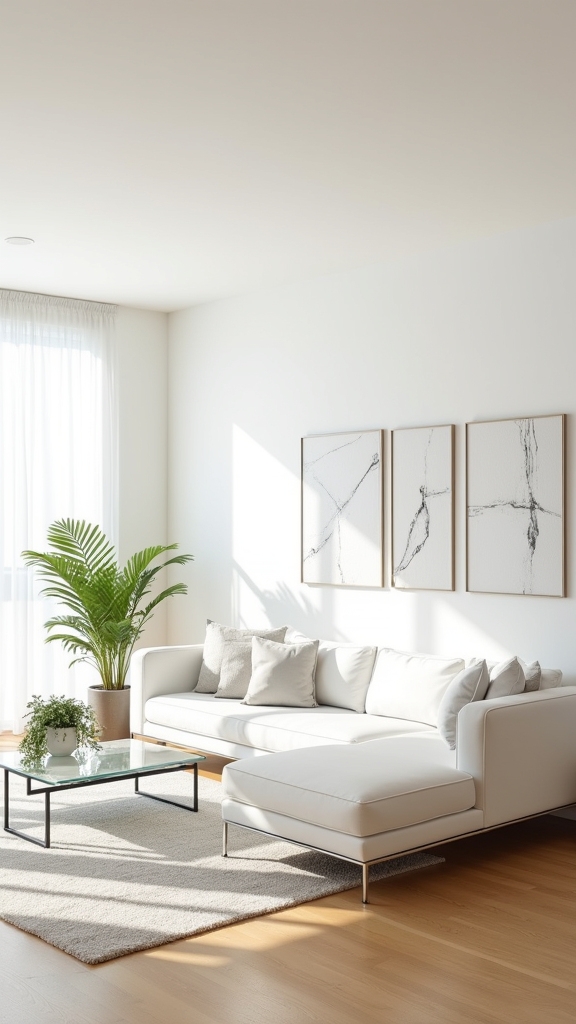
Although often underestimated, white walls fundamentally transform the perception of space in a living room by amplifying both natural and artificial light.
This optical expansion effect results from white’s unparalleled reflectivity, making compact rooms feel more expansive and airier. The minimalist clarity of white surfaces enhances spatial definition, eliminating visual clutter and promoting a harmonious environment.
White walls can serve as a perfect backdrop for incorporating sustainable and eco-friendly design elements, allowing for a stylish commitment to planet-friendly decor without compromising the room’s overall aesthetic.
Utilizing white as a foundational palette also provides exceptional flexibility for layering textures and introducing statement furnishings without overwhelming the senses. In multifunctional living areas, white’s neutrality supports seamless shifts between zones, fostering clarity and focus.
- Maximize daylight with white walls to visually enlarge tight living quarters.
- Use white as a base to accentuate architectural features and clean lines.
- Choose white for adaptability, supporting diverse décor and furnishing styles.
Give Your Kitchen a Cleaner Look
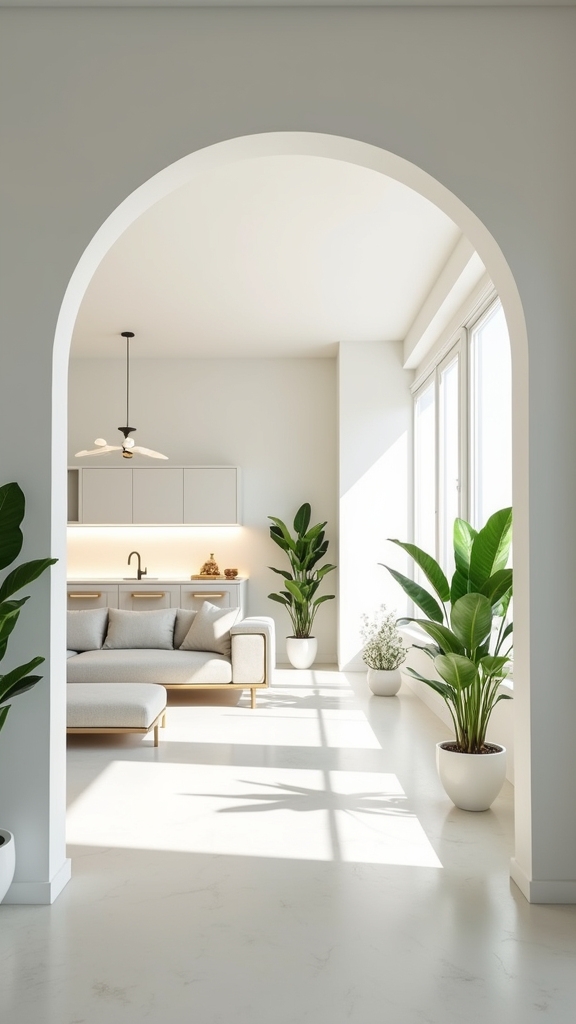
A simple application of crisp white paint on kitchen walls instantly evokes a sense of cleanliness and order, visually reinforcing the kitchen’s role as a hygienic environment.
In a white room, the reflective properties of white surfaces amplify natural and artificial light, enhancing the perception of spaciousness—an advantage in compact kitchens.
For a cohesive, clean aesthetic, pair white walls with similarly toned cabinetry and countertops, ensuring seamless visual continuity. This monochromatic approach not only brightens the space but also highlights any colorful appliances or accessories, allowing them to serve as intentional focal points.
The versatility of white integrates effortlessly with diverse kitchen styles, from traditional to contemporary, while maintaining a unified appearance.
For practical maintenance, opt for washable, durable paint finishes to keep white walls pristine.
Use White Walls for a Minimalist Bedroom
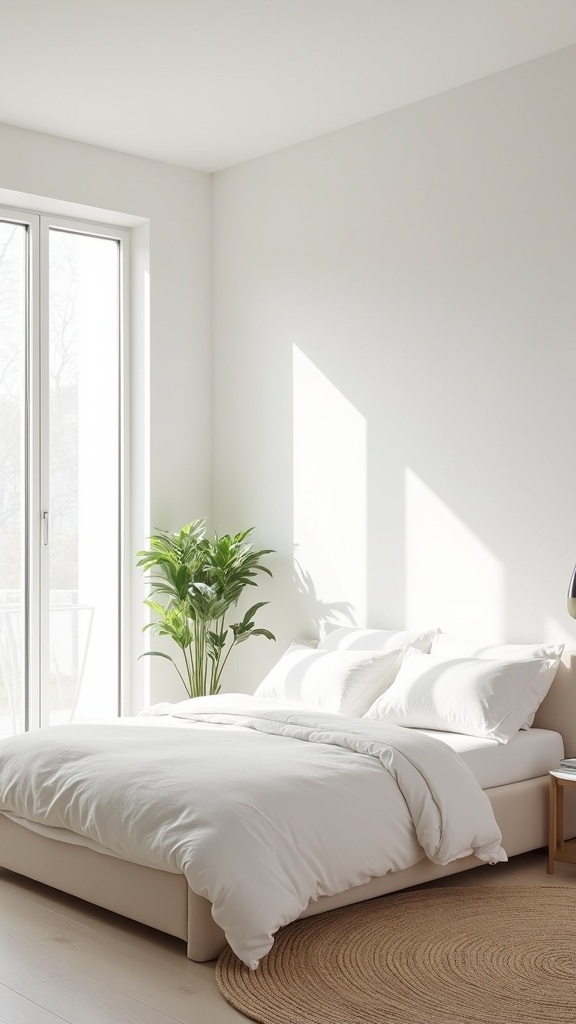
A minimalist bedroom anchored by white walls establishes calming simplicity and directs visual focus, creating a tranquil retreat.
Strategic use of subtle accents—such as textured throws or understated artwork—delivers a distinctive personal touch without visual clutter.
This restrained palette amplifies the impact of each design element, resulting in a space that feels both expansive and intentional.
Calming Simplicity and Focus
When applied to a minimalist bedroom, white walls serve as a visual anchor, promoting clarity and a sense of calm. The inherent calming simplicity of a clean, white backdrop eliminates visual noise, fostering an environment conducive to relaxation and mental focus.
White reflects natural light, amplifying spatial perception and making compact bedrooms feel more expansive. This approach not only enhances tranquility but also encourages mindfulness by reducing distractions and supporting organizational discipline.
- Optimize daylight: White walls maximize natural light, creating a bright and airy atmosphere ideal for restorative sleep and morning routines.
- Maintain order: The uncluttered visual field provided by white promotes a clean and organized space, essential for minimalist living.
- Encourage relaxation: Calming simplicity in design helps establish a peaceful retreat, supporting overall well-being and mental clarity.
Subtle Accents, Big Impact
Through utilizing the inherent neutrality of white walls, a minimalist bedroom gains visual spaciousness and calm, serving as a versatile canvas for subtle yet impactful accents.
White living rooms and bedrooms both benefit from this approach, as the backdrop amplifies natural light and enhances the perception of openness.
To add colour without overwhelming the serene atmosphere, integrate soft textiles—such as linen throws, pastel cushions, or neutral-toned bedding.
Layering materials like a textured rug or lightweight curtains introduces depth while preserving simplicity.
Minimal decor, such as a restrained selection of art or a single potted plant, facilitates personal expression in a clean, uncluttered manner.
This method guarantees the space remains tranquil, visually dynamic, and adaptable to evolving tastes or seasonal updates.
Add a Mirror for Reflection Perfection
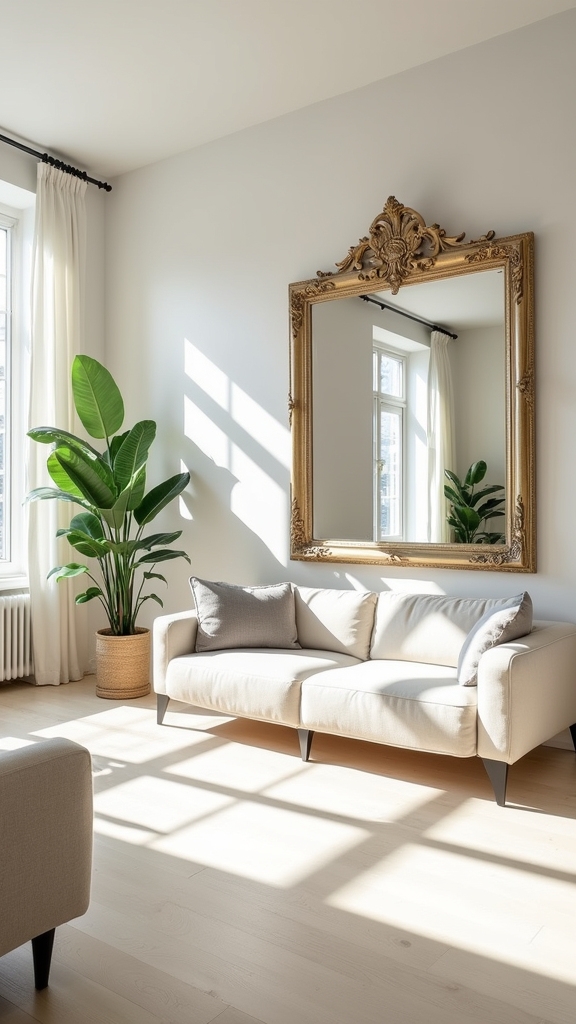
Few design elements match the transformative impact of a well-placed mirror against white walls.
Mirrors serve as both functional and aesthetic powerhouses, amplifying light and visually expanding the living room’s footprint. When positioned thoughtfully, a mirror not only reflects natural illumination but also enhances the room’s architectural features and existing décor. Incorporating soft ambient lighting around mirrors can further enhance the warm glow and comfort of the living room.
For those aiming to punctuate the pristine expanse of white walls, consider frames in warm woods or bold hues to introduce contrast and tactile interest.
Strategic placement creates compelling focal points while preserving a cohesive, airy ambiance.
- Enhances luminosity by bouncing natural and artificial light throughout the living space
- Maximizes spatial perception, making compact rooms feel open and inviting
- Offers an opportunity to layer contrasting textures and colors through frame selection
Opt for Monochrome Magic
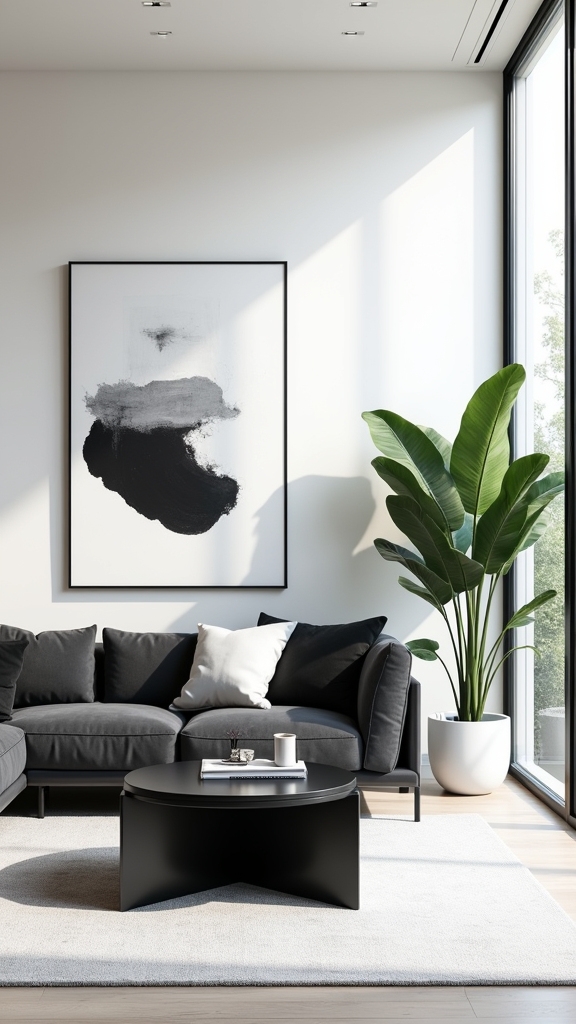
A carefully curated monochrome palette transforms white walls into a striking backdrop, establishing a living room that balances sophistication with visual clarity. In monochrome decor, the interplay between black and white living elements—such as streamlined sofas, graphic art, and bold accent chairs—creates crisp contrast and a timeless, cohesive aesthetic. To introduce dimensionality, designers recommend layering textures like plush throws, tactile rugs, and metallic accessories, which prevent the space from feeling flat. Subtle tertiary hues, such as soft greys or muted pastels in cushions or ceramics, add nuanced warmth while respecting the monochrome scheme. Incorporating monochrome photography prints can add timeless elegance and versatility to the decor. For maximum impact, consider anchoring the room with a statement black coffee table or art piece, ensuring that the pristine white walls remain a luminous canvas for curated monochrome expression.
Fulfill Your Creative Potential
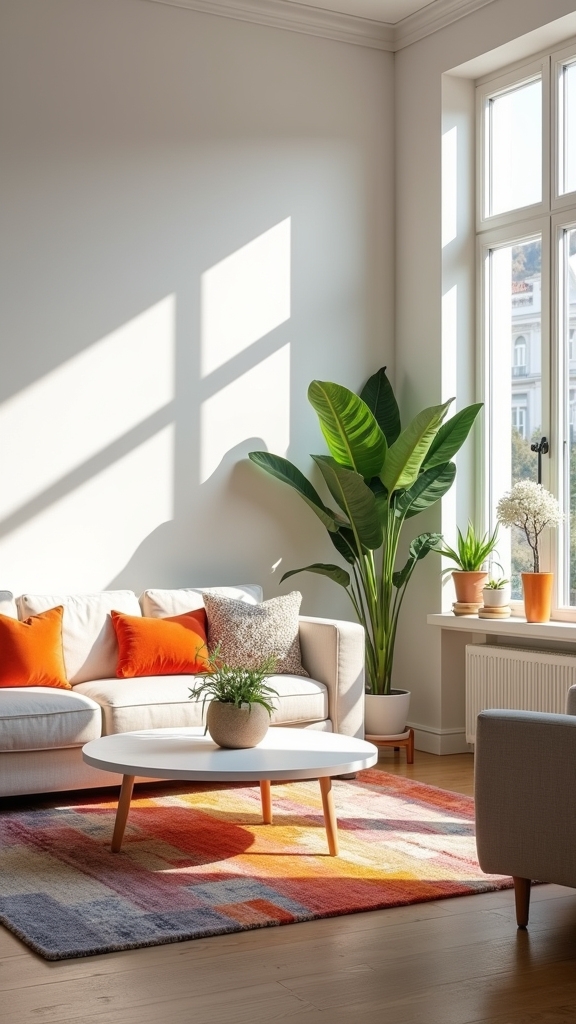
Harnessing the versatility of white walls, designers maximize creative expression by treating them as an open canvas for bold experimentation.
The neutrality of white walls allows for seamless adaptation of diverse colour schemes, enabling homeowners to showcase evolving tastes and seasonal trends without structural changes. This adaptability supports the layering of textures—think velvet, linen, or woven throws—and the integration of dynamic patterns through rugs or cushions.
White walls empower individuals to curate expressive gallery walls, display eclectic accessories, or introduce statement furnishings for a truly bespoke ambiance.
White walls invite you to curate striking gallery displays and showcase statement pieces, transforming any space into a uniquely personal retreat.
- Experiment with vibrant accent colours—rotate pillows, throws, and vases to refresh the palette.
- Layer tactile materials such as boucle, wood, or metallics for depth and interest.
- Integrate artwork ranging from abstract canvases to vintage prints for personal storytelling.
This flexible foundation nurtures enduring creativity. Adding houseplants to enhance aesthetic balance can further accentuate the natural beauty and vibrancy of a white-walled living room.
White Walls Are Perfect for Industrial Chic
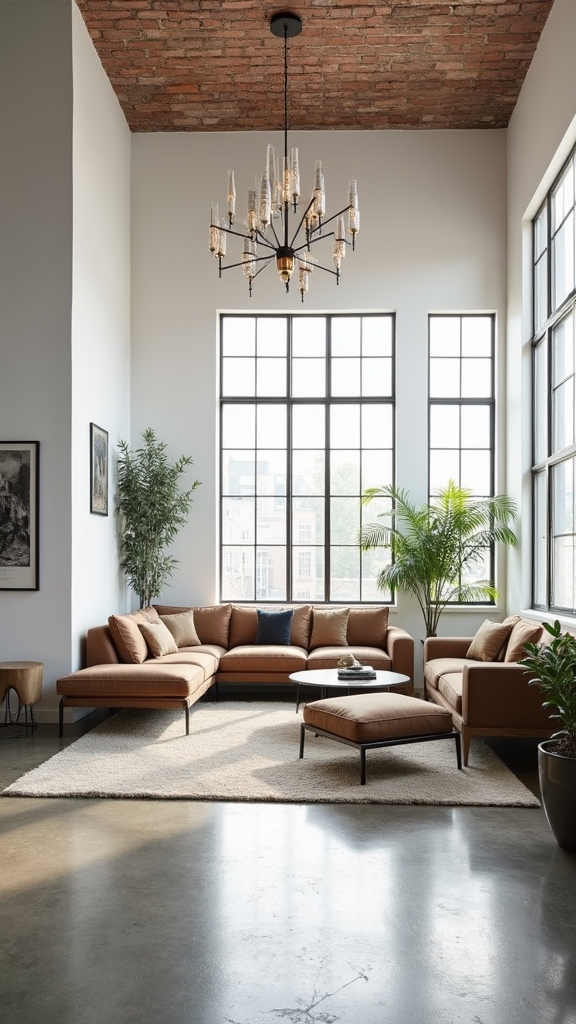
Building on the creative versatility of white walls, their role in industrial chic design is both functional and aesthetic. White walls serve as a pristine canvas that amplifies the raw materials intrinsic to industrial design—think exposed brick, concrete, and steel.
This neutral backdrop accentuates structural features, ensuring metal fixtures and architectural elements remain focal points without visual competition. Strategically introducing warm wooden accents can soften the sterility of white walls, infusing the space with contrast and tactile warmth.
Capitalizing on white walls’ reflective properties further enhances natural light, making industrial spaces—especially lofts with high ceilings—appear more expansive.
Pairing minimalist white decor with vintage industrial pieces cultivates an eclectic yet cohesive environment, truly exemplifying the harmony and edge of industrial chic interiors.
White Can Help Things Look Uncluttered
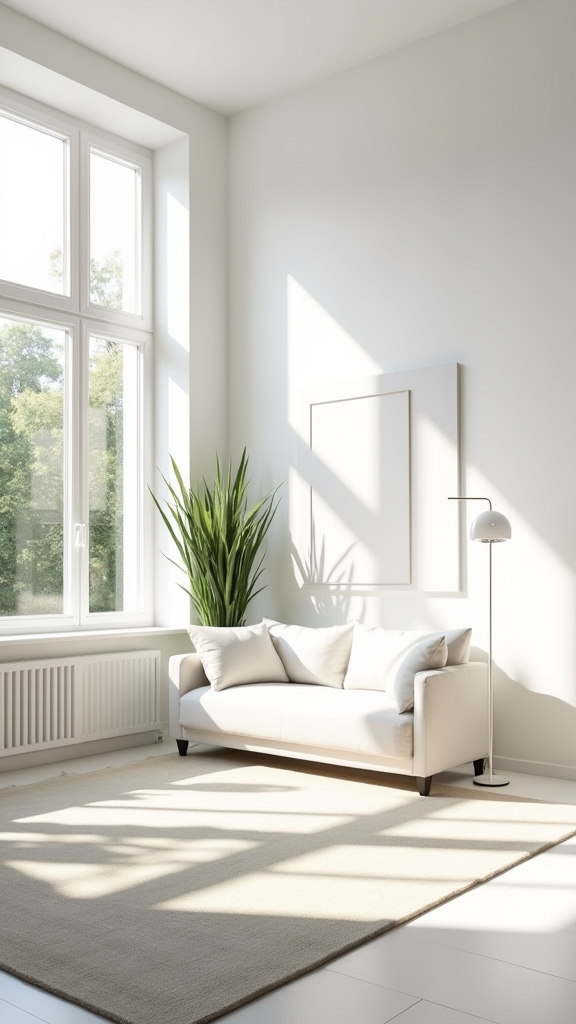
Countless living rooms benefit from the visual clarity that white walls provide, instantly establishing an organized, serene foundation.
The reflective quality of white amplifies natural and artificial light, which visually expands the space and underscores an uncluttered aesthetic. In design terms, white acts as a neutral canvas, minimizing visual noise and allowing furnishings and accessories to take center stage without overwhelming the senses.
Minimalist interiors, in particular, thrive with white walls, as their simplicity fosters a sense of order and tranquility. Expert application of white can also streamline seasonal updates, as vibrant accents or curated collections can be introduced without risking disorder.
- Enhances spatial perception by maximizing light reflection
- Serves as a neutral backdrop for rotating décor
- Supports minimalist principles for a consistently uncluttered look
Frequently Asked Questions
How Can I Make My White Wall More Interesting?
To make a white wall more interesting, one should integrate accent decor like bold artwork and mirrors, utilize textured materials such as woven textiles and wood, and strategically layer accessories to introduce depth, visual intrigue, and spatial dynamism.
What Color Goes With White Walls in a Living Room?
Selecting accent colors such as navy blue, emerald green, or deep red introduces bold contrast and visual interest. Complementary hues, including soft pastels or warm wood tones, foster balance and tranquility, enhancing the living room’s overall aesthetic appeal.
What Is the 2/3 Rule for Living Rooms?
The 2/3 rule for living rooms advises that furniture placement, artwork, and lighting options should not exceed two-thirds of wall height, ensuring visual proportion. This expert guideline optimizes spatial harmony and enhances room aesthetics through balanced, practical composition.
What Art Looks Good on White Walls?
Abstract paintings, framed photographs, vibrant murals, textured sculptures, colorful prints, and large canvases all visually enhance white walls. Experts recommend choosing bold hues or dynamic textures to create focal points and maximize visual impact in contemporary interiors.
Conclusion
A white-walled living room serves as a versatile canvas, enabling endless design possibilities. Through strategic layering of textures, the addition of wood tones, and carefully curated wall art, homeowners can craft spaces that feel both contemporary and inviting. Playing with contrast, monochrome schemes, and industrial elements further enhances visual intrigue. Ultimately, white walls allow for adaptable, clutter-free environments where personal style can evolve, ensuring the living room remains timeless yet distinctly individual.
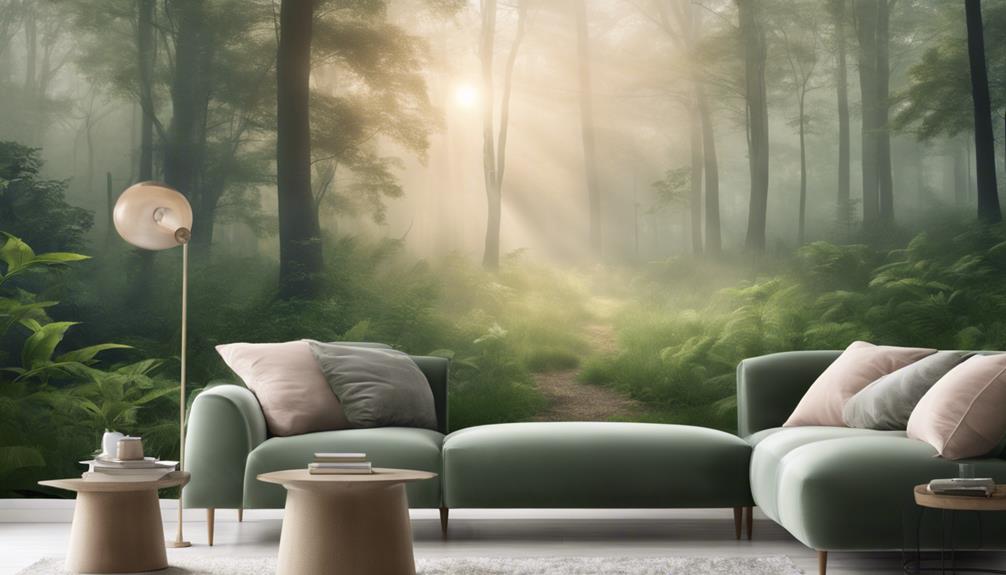
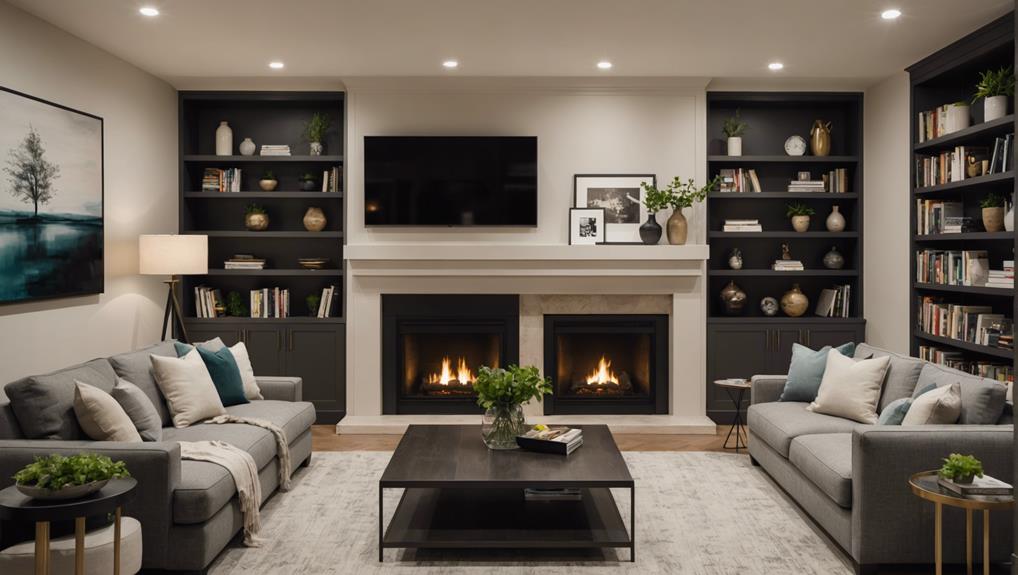
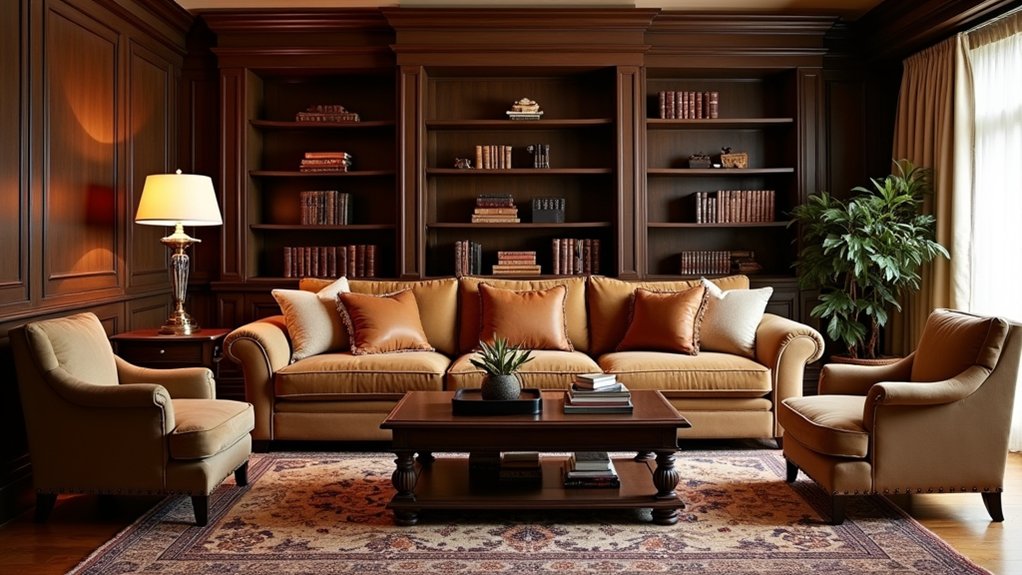
Leave a Reply